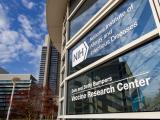Sep 7, 2011 (CIDRAP News) – After a decade of significant gains following the terrorist attacks of 2001, the risk of continuing budget cuts for state and local public health agencies is the biggest threat to US public health preparedness, says a top official at the Centers for Disease Control and Prevention (CDC).
The economic crisis and its effects on state and local health departments are a major challenge to preparedness, Dr. Ali S. Khan, director of the CDC's Office of Public Health Preparedness and Response, wrote in a "viewpoint" article in the latest issue of The Lancet.
"States cannot adequately meet everyday needs, let alone increased efforts for emergency incidents that have potential national implications, without reliable, dedicated, or sustained federal funding," Khan said. "Because all responses are initially local, this limitation is the primary vulnerability to national preparedness."
Khan's article, part of a special issue on the consequences of 9/11 (including the Sep 11 attacks and the subsequent anthrax attacks), focuses primarily on the national preparedness gains of the past 10 years, such as the CDC program that supports state and local public health workers. He also lists areas in which more work is needed.
His article is paired with a report from two New York City health officials who catalog various steps the city's Department of Health and Mental Hygiene (DHMH) has taken to improve its preparedness since 2001, such as setting up an extra emergency-operations center and enlisting 9,000 Medical Reserve Corps members to assist in emergencies.
Effects of state cuts
Khan wrote that state and local health departments lost more than 44,000 jobs from 2008 to 2010, and the cuts have already affected their ability to respond to routine and major incidents.
For example, a 2009 survey found that only 37 state epidemiologists reported "substantial-to-full capacity" to respond to bioterrorism emergencies, a 10% decline since the peak of federal funding in 2004, he wrote. Also, though laboratory capacity has improved, last year 12 states could not submit Escherichia coli test results to the CDC within 4 working days, slowing identification of outbreaks.
National progress
However, Khan also describes many significant preparedness improvements. He outlines some of the key ones in a "then and now" chart, which notes, among other things, that:
- The CDC Public Health Emergency Cooperative agreement program, authorized by Congress after the 2001 attacks, supports more than 5,000 frontline state public health workers who assist in local and regional responses.
- The nation had no emergency medical stockpile before 1999, but now the Strategic National Stockpile holds key medical supplies, and all states have plans for receiving and distributing them.
- The CDC, equipped with only an ad hoc emergency operations center before 2001, now has a state-of-the-art center, and nearly all states have emergency centers as well.
- In contrast to the lack of coordination in 2001, health departments in every state have set up connections with other emergency management agencies and conducted joint exercises.
- The CDC's Epidemic Information Exchange (Epi-X) provides a secure electronic system for sharing preliminary health surveillance information, something that did not exist before 2000.
- More than 150 labs belong to the Laboratory Response Network and can test for biological threat agents. Before 1999, all such testing was done by the CDC.
Khan observes that much work remains to be done, however. Among the major concerns is the risk that terrorists could genetically modify existing microbes to make them more harmful or even create entirely new pathogens. At the same time, he says, anthrax is still "the most concerning biological agent to the USA," and the CDC has created an Anthrax Management Team to develop guidelines for responding to anthrax incidents.
Among Khan's recommendations for further preparedness efforts are these:
- Improve community and local resilience and personal preparedness.
- Focus on biosurveillance "to ensure accurate and complete data collection and analysis enabled by electronic medical and laboratory records."
- Increase the focus on vulnerable populations that need extra help in emergencies.
- Improve the coordination of public health, healthcare, emergency medical services, and the private sector.
New York City's efforts
In New York City, a key preparedness step since Sep 11, 2001, has been the establishment of a formal incident command system, according to Thomas A. Farley and Isaac Weisfuse of the DHMH.
The 2001 events prompted the department to formalize its system and develop detailed protocols, so that all 6,000 staff members now have emergency management responsibilities. Under the system, the agency has created a pool of five people for each key leadership role to ensure continuity.
In other efforts to improve public health preparedness, the DHMH:
- Set up two emergency operations centers at different sites, since the agency's headquarters was in an unsafe area immediately after 9/11
- Made plans to distribute emergency medical supplies and tested them
- Created a Medical Reserve Corps with more than 9,000 volunteer doctors, nurses, and others who agree to serve on short notice
- Developed a "comprehensive electronic syndromic surveillance system" that draws data from nearly all New York City hospital emergency departments
- Built a new biosafety level 3 lab
Farley and Weisfuse cite two specific areas that need further strengthening: the standards for environmental cleanup of anthrax and other biological agents, and systems for quickly distributing essential medications to large populations.
They also comment that on the global level, "public health officials are increasingly appreciating the complexity of preparedness for public health emergencies in megacities." They say large cities need better dialogue to share best practices and promote efficiencies for future emergencies.
Khan AS. Public health preparedness and response in the USA since 9/11: a national health security imperative. (Commentary) Lancet 2011 Sep 3;378(9794):953-6 [Full text]
Farley TA, Weisfuse I. Redefining of public health preparedness after 9/11. (Commentary) Lancet 2011 Sep 3;378(9794):957-9 [Full text]


















